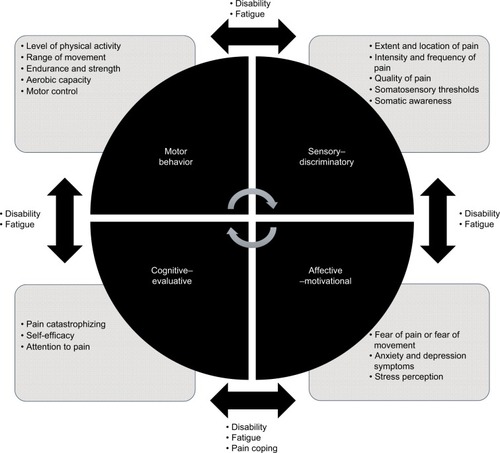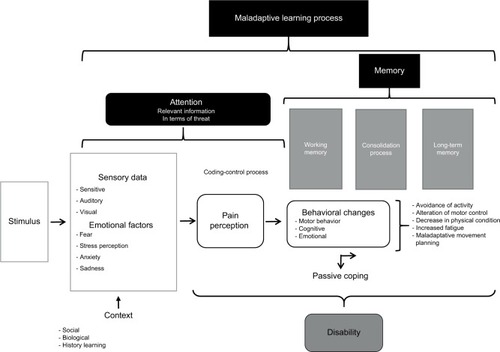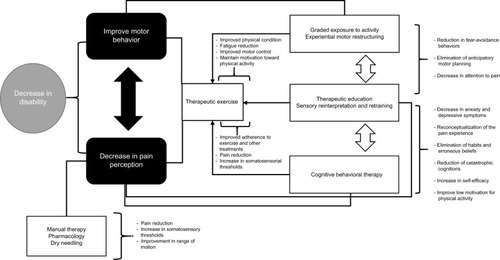Figures & data
Figure 1 The four dimensions of the biobehavioral model of pain perception and motor behavior.

Table 1 Evidence on treatment options for pain related to TMD
Figure 2 Mechanisms involved in the biobehavioral model of pain perception and motor behavior.

Figure 3 Representation of the therapeutic approach according to the biobehavioral model of pain perception and motor behavior.

